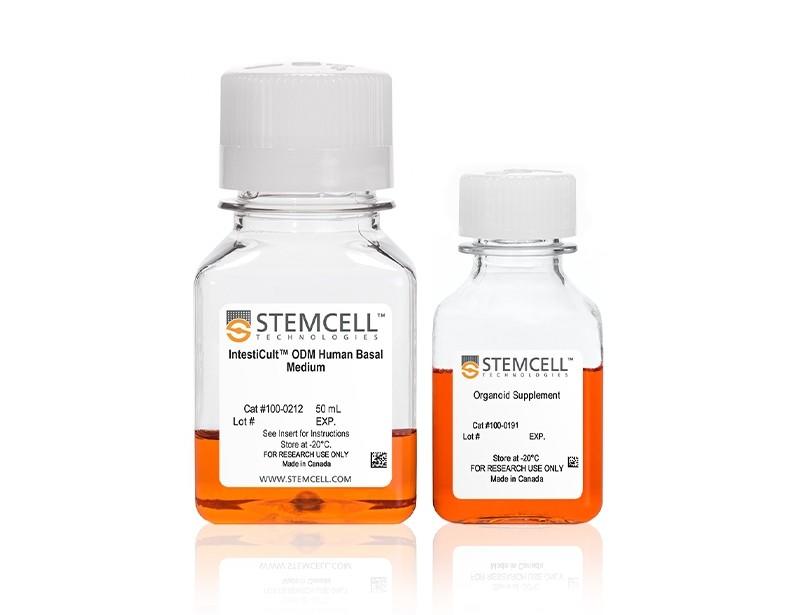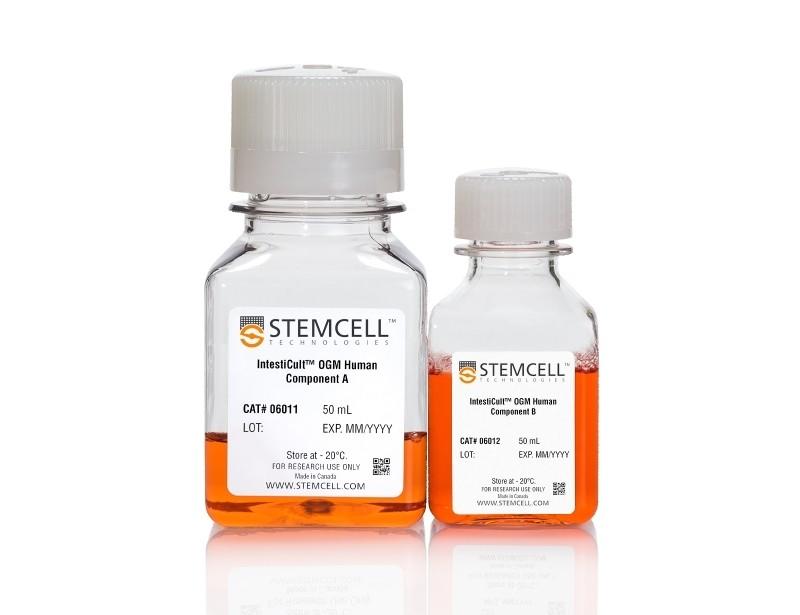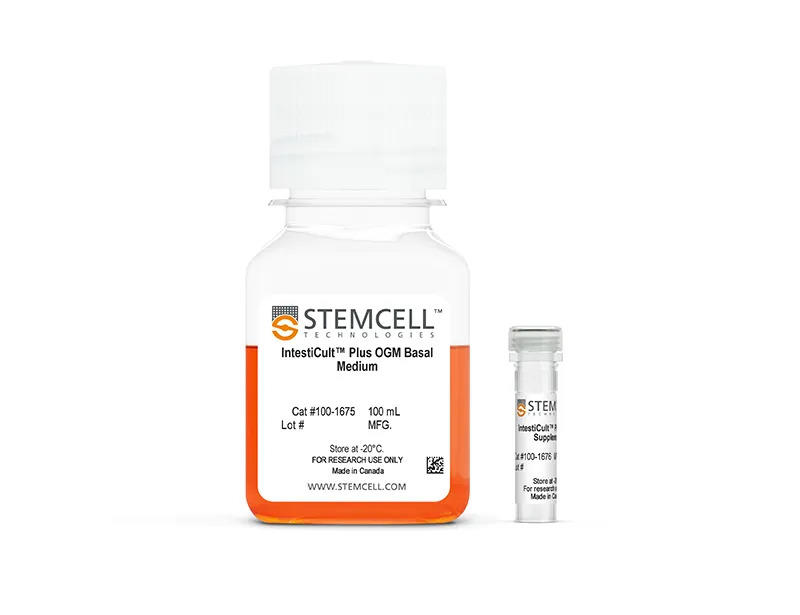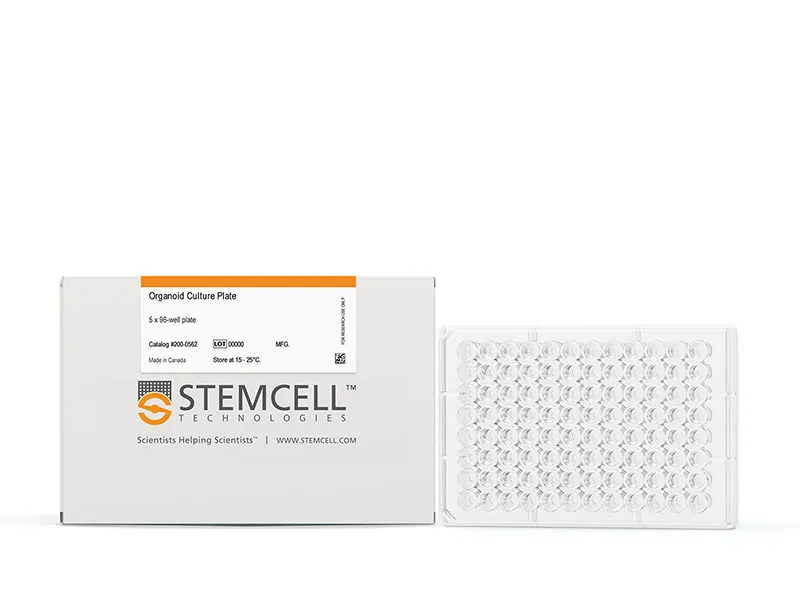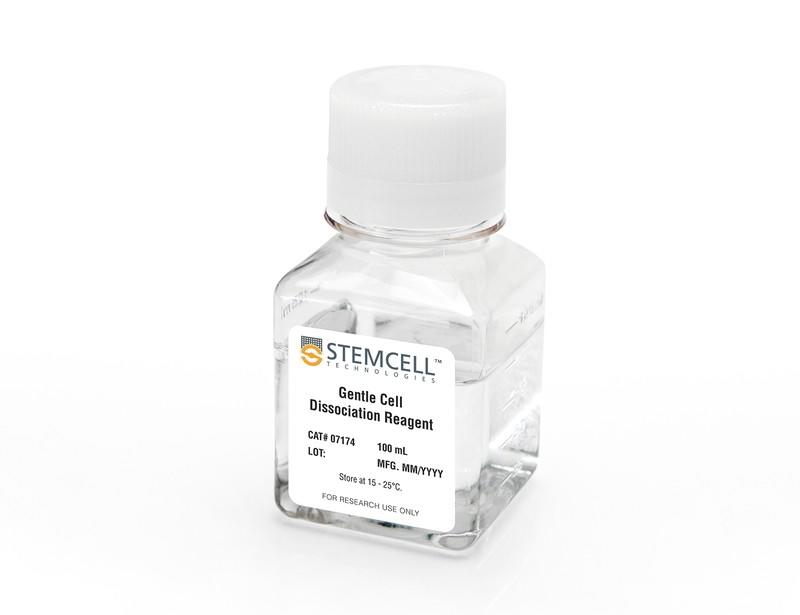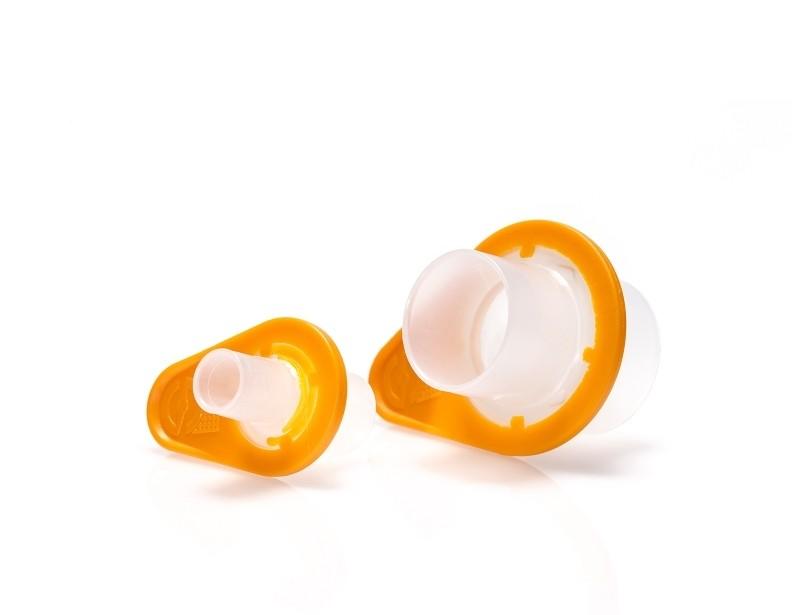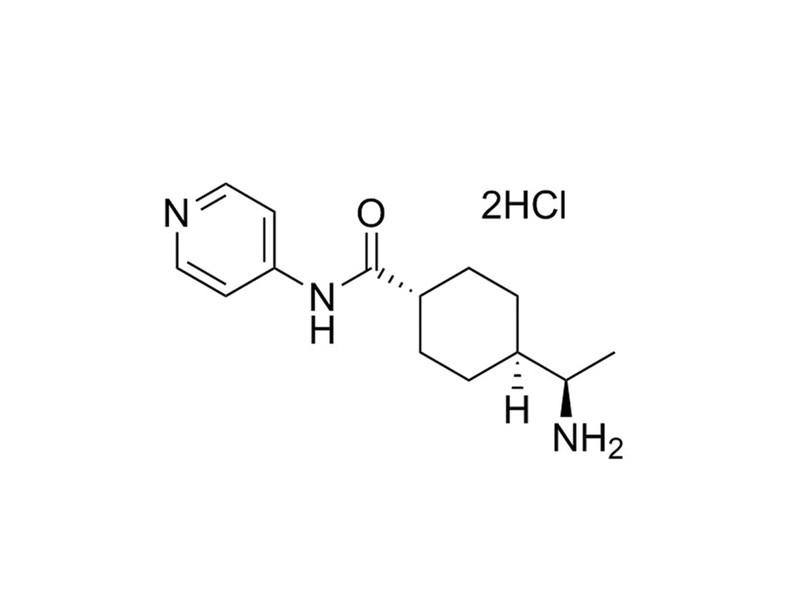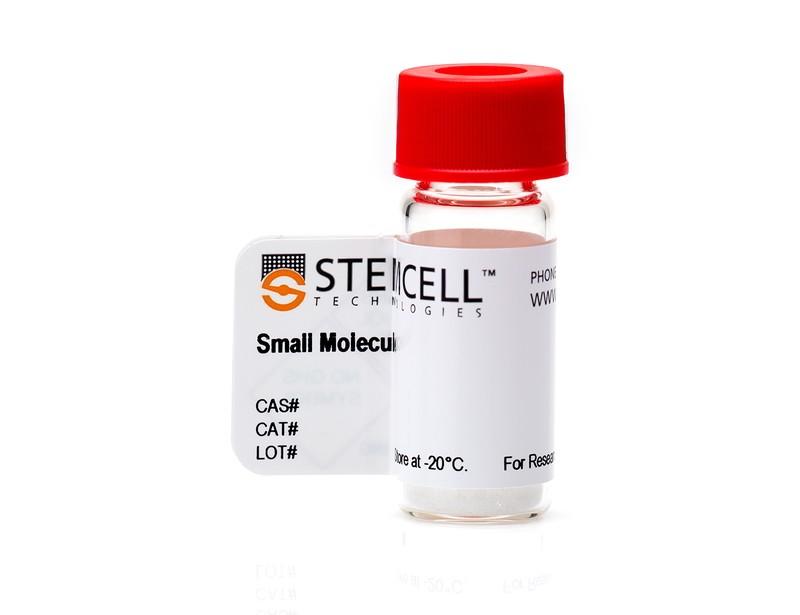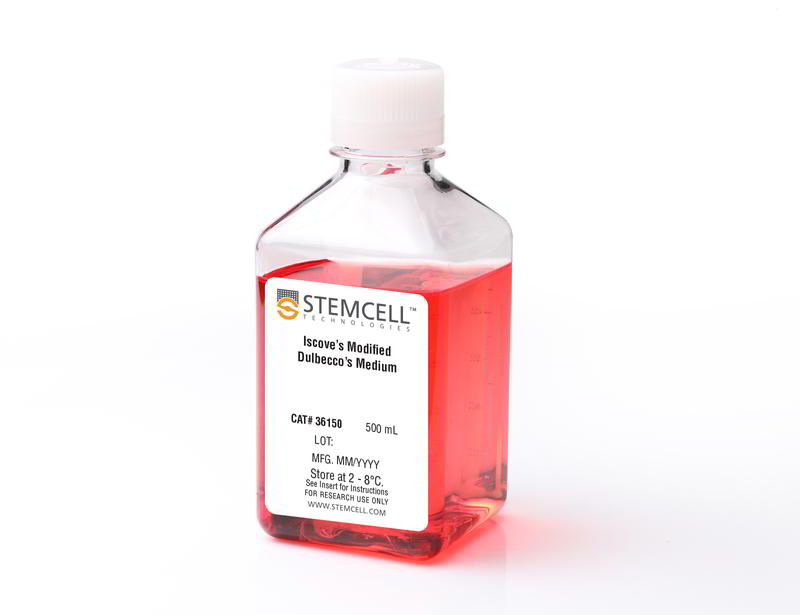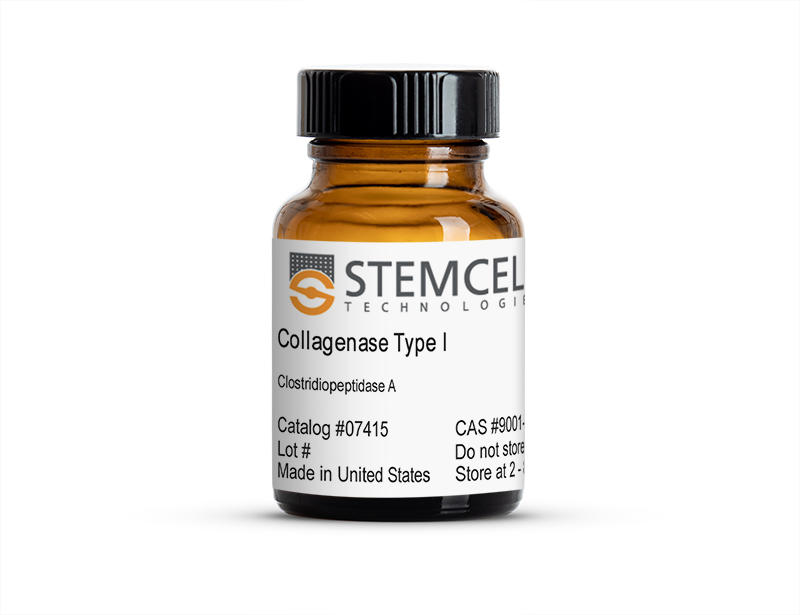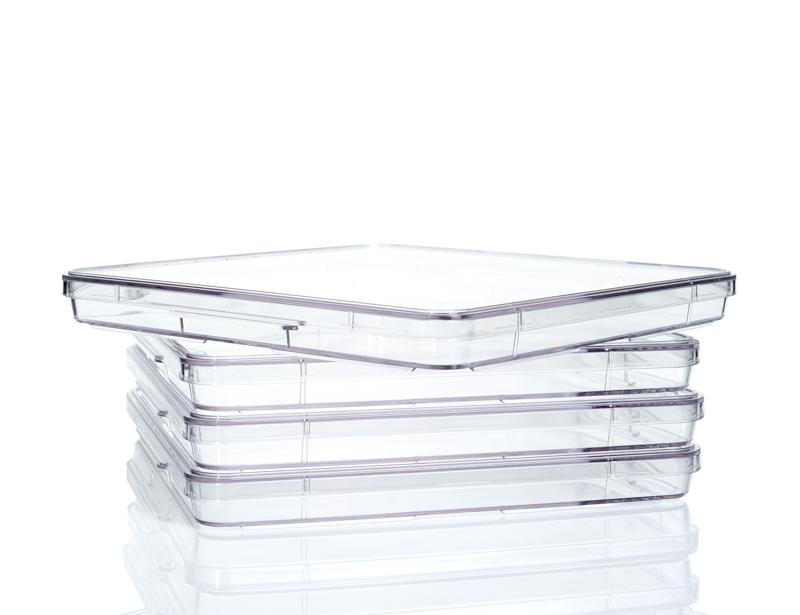STEMCELL Technologies IntestiCult IntestiCult Organoid Differentiation Medium (Human)
- 研究用
「IntestiCult™による腸内ウイルス感染の研究」最新情報
IntestiCult™ Organoid Differentiation Medium (Human) (ST-100-0214)は、樹立したヒト腸オルガノイドをさらに分化させる完全培地です。3次元(3D)培養、あるいは2次元(2D)培養(単層または気液界面 [air-liquid interface; ALI])で分化できます。腸陰窩 (intestinal crypts) 由来の腸オルガノイド、または IntestiCult™ Organoid Growth Medium(ヒト用; ST-06010)で継代培養した腸オルガノイドのどちらからも培養を開始できます。
本品で作製した腸の培養物には、分化細胞と幹細胞の集団が生理学的に適切な割合で含まれ、陰窩-絨毛軸の多様性を再現します。従来の細胞株と比べて、腸オルガノイド由来の単層は、生体内の腸管上皮バリアの機能をより良く再現し、重要な分化マーカーをより高いレベルで発現し、in vivo の腸により近い形態です。
腸オルガノイド培養の用途には、腸上皮の発達と機能の研究、腸疾患モデル、化合物スクリーニング、および再生医療の開発が含まれます。腸オルガノイド由来の単層培養およびALI培養は、腸管上皮の頂端面にアクセスしやすいため特に透過性アッセイと感染症の研究に適しています。
本品の使用前に、腸オルガノイド培養を開始し拡大するには、IntestiCult™ Organoid Growth Medium (Human)(ST-06010)が必要になります。
本品はHUBとの共同開発製品です。商業目的で使用する場合は、HUB(www.huborganoids.nl/)へご連絡の上、商用ライセンスまたはHUBとのライセンスに関する説明を受けてください。
製品の特長
IntestiCult™ Organoid Differentiation Medium (ODM) で、ヒト腸オルガノイドをさらに分化
- 分化細胞と幹細胞の生理学的比率を示す腸オルガノイドの作製
- 単層培養およびALI培養への移行で、頂端表面に容易にアクセス
- 継代間および反復間での一貫した結果取得
データ紹介
分化したヒト腸オルガノイドの形態
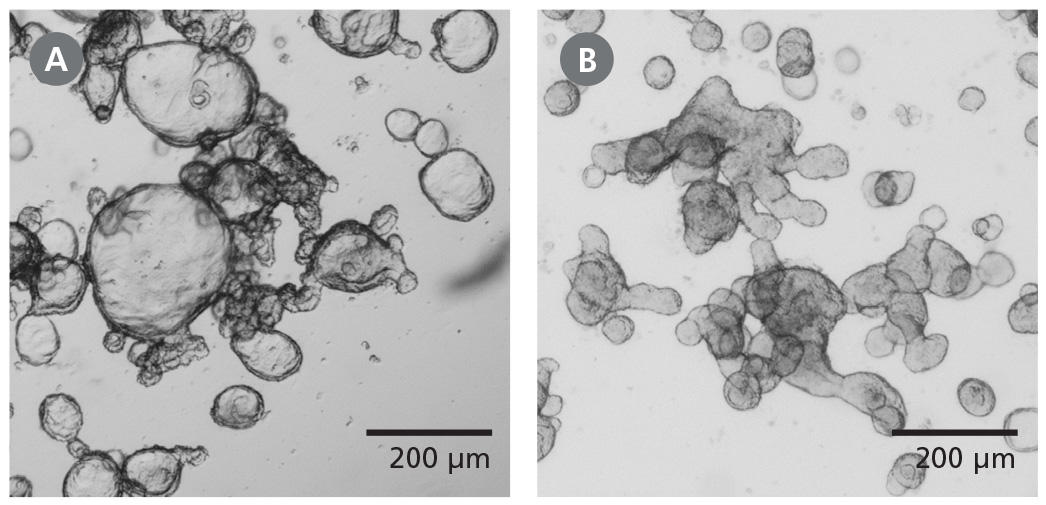
Figure 1. Differentiated Human Intestinal Organoids Display a Budded Morphology
(A) Organoids grown in IntestiCult™ OGM are primarily cystic.
(B) When switched to IntestiCult™ ODM, organoids develop a thickened epithelium with a pronounced, budded morphology indicative of a more differentiated state. Organoids were imaged on day 5 of expansion or differentiation respectively.
分化した腸オルガノイドでの成熟細胞の増加
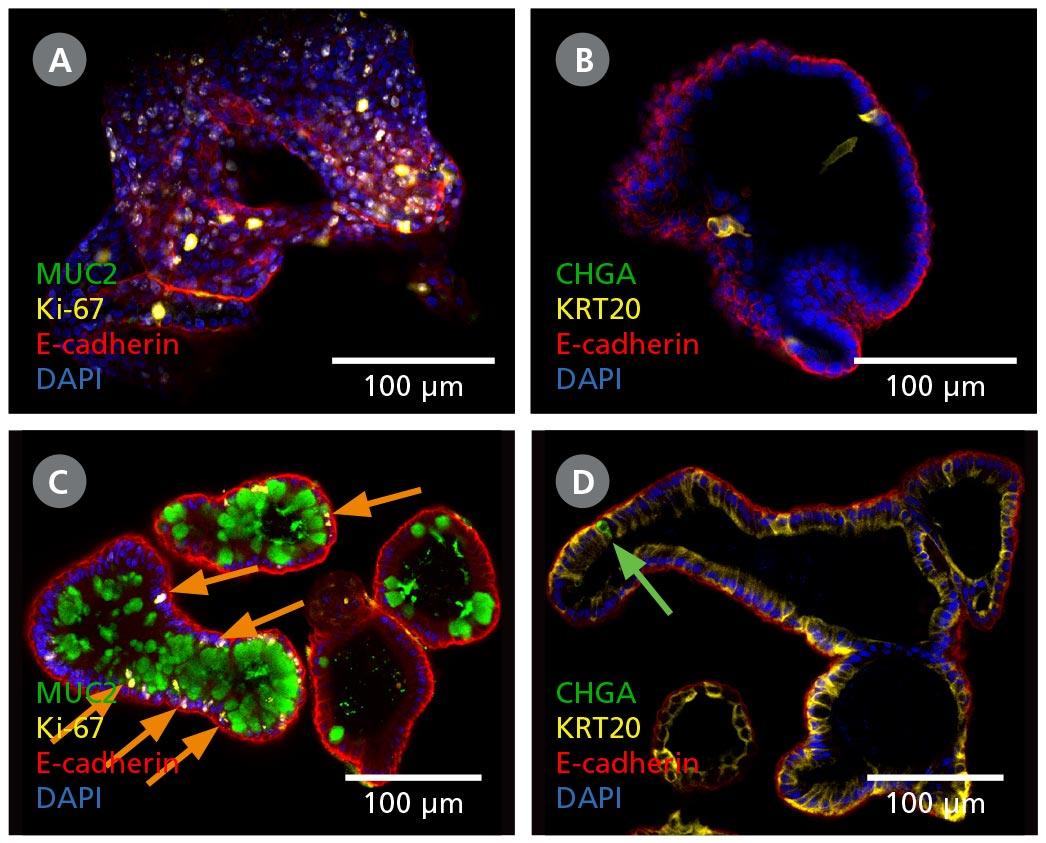
Figure 2. Intestinal Organoids Contain a Higher Proportion of Mature Cell Types Following Differentiation in IntestiCult™ ODM
(A, B) Organoids grown in IntestiCult™ OGM are enriched for Ki-67+ proliferative cells (A), while containing few differentiated cell types such as goblet cells (MUC2, A), enterocytes (KRT20, B), and enteroendocrine cells (CHGA, B).
(C, D) When switched to IntestiCult™ ODM, organoids contain a small number of Ki-67+ proliferative cells (C, arrows), with more physiological proportions of goblet cells (MUC2, C), enterocytes (KRT20, D), and chromogranin A- (CHGA-)positive enteroendocrine cells (D, arrow).
気液界面(ALI)培養での腸上皮分化
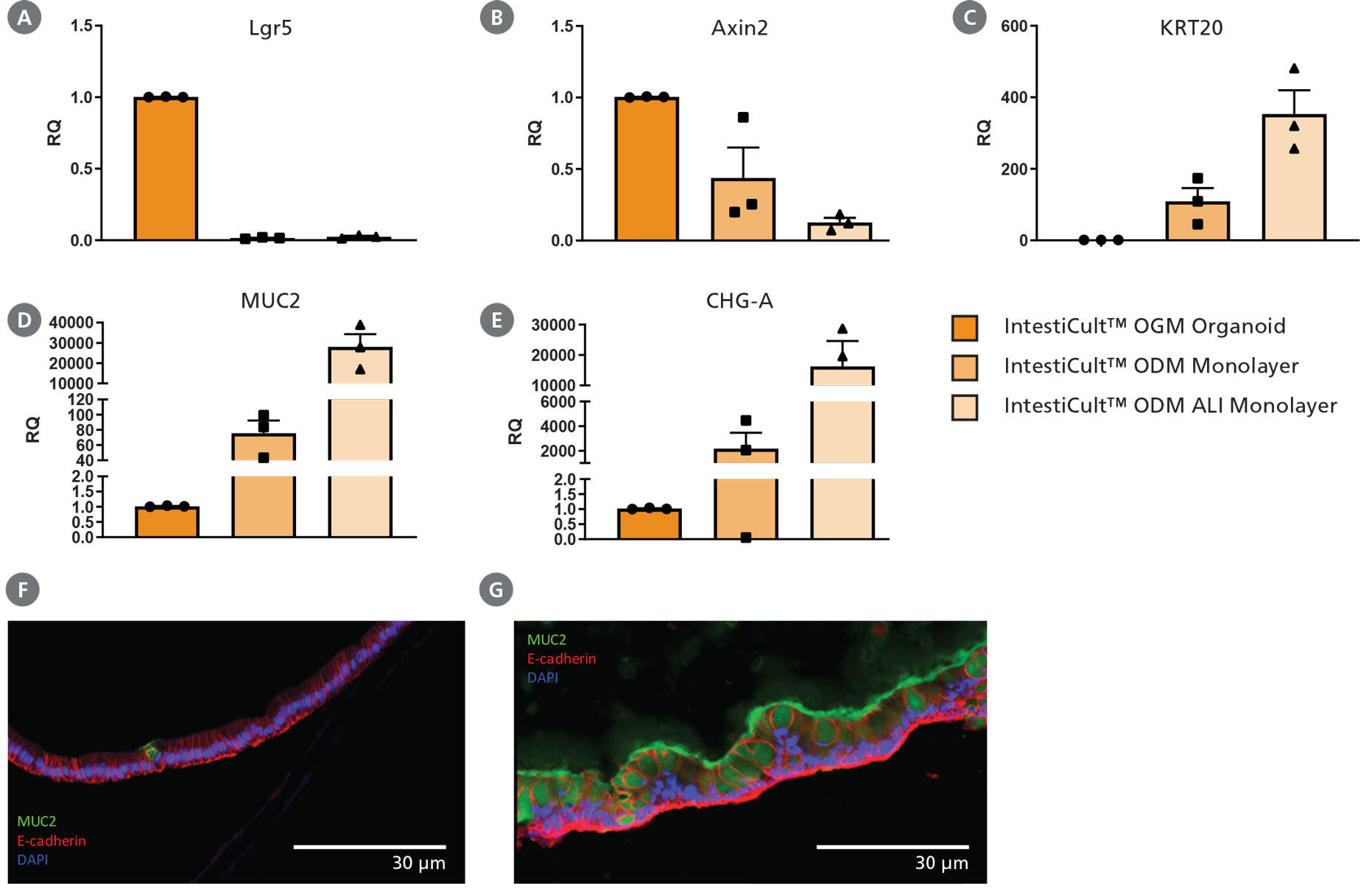
Figure 3. Differentiation of Intestinal Epithelium at the Air-Liquid Interface (ALI) Using IntestiCult™ ODM
(A – E) Growing organoid-derived monolayers as ALI cultures drives further differentiation of intestinal epithelial cultures as seen by changes in gene expression measured by RT-qPCR. Relative quantification (RQ) for each marker is shown relative to actB and TBP housekeeping genes and normalized with respect to undifferentiated organoids grown in IntestiCult OGM (Human). Progenitor markers (A) Lgr5 and (B) Axin2 are significantly reduced in both submerged monolayers and ALI cultures, while markers of enterocytes (KRT20, C), goblet cells (MUC2, D), and enteroendocrine cells (CHGA, E) are significantly increased. Further reduction in Axin2 is seen in ALI monolayers with an increase in expression of KRT20, MUC2, and CHGA.
(F, G) Comparing cross-sections of organoid monolayers grown in IntestiCult™ ODM as (F) submerged culture or (G) at the ALI shows further differentiation of the intestinal epithelium with an increased proportion of goblet cells and extracellular mucus (MUC2, green).
単層およびALI培養でのCaco-2細胞より生理的なTEER
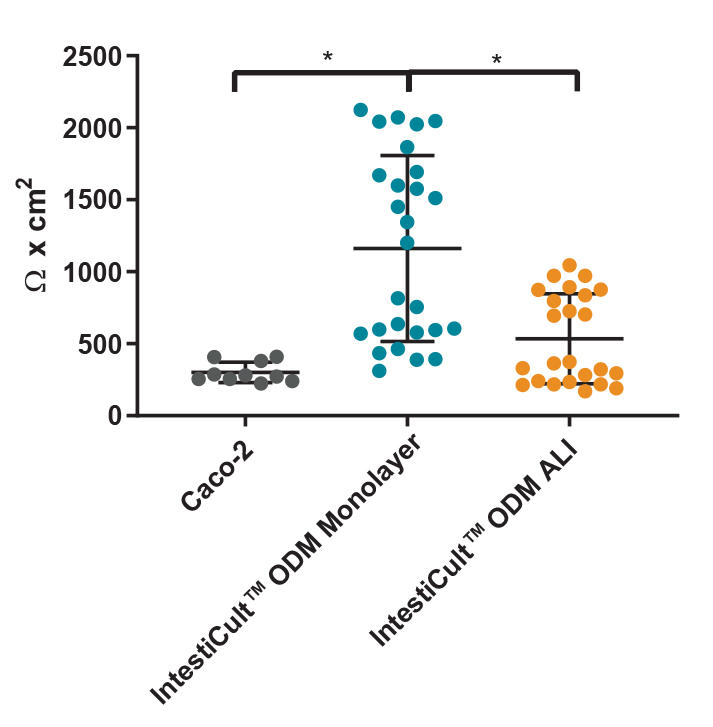
Figure 4. Differentiated Organoid-Derived Monolayers and ALI Cultures Display More Physiological Trans-Epithelial Electrical Resistance (TEER) than Caco-2 Cells
Differentiated organoid-derived monolayers grown as a submerged monolayer (IntestiCult™ ODM Monolayer), or at the ALI (IntestiCult™ ODM ALI), show higher TEER values as compared to Caco-2 cultures.Organoid-derived monolayers grown at the ALI show a loosening of tight junctions due to further differentiation of the brush border, and thus lower TEER values are observed. * p < 0.0001.
分化した腸オルガノイドによるCFTR応答モデル
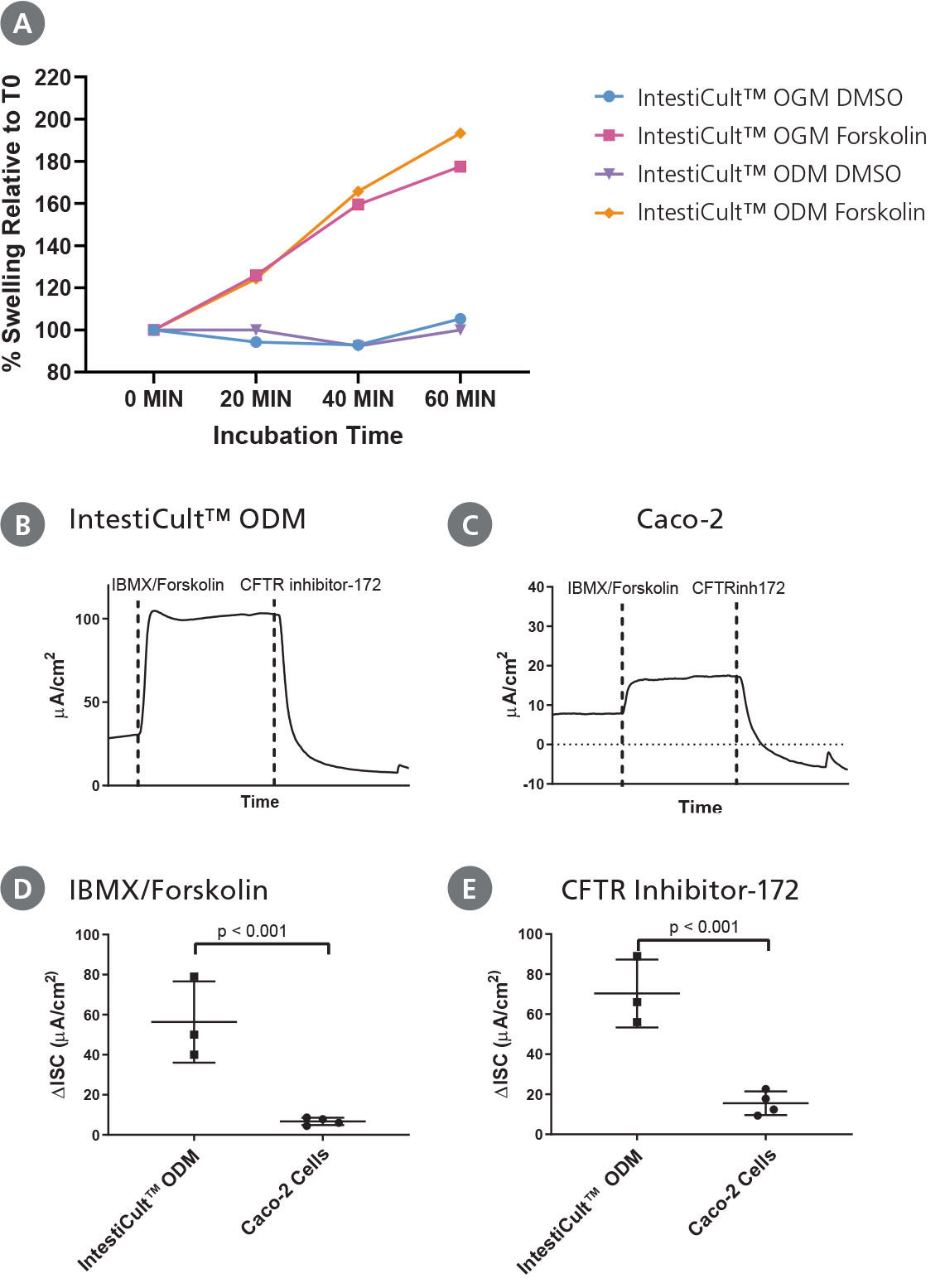
Figure 5. Differentiated Intestinal Organoids Provide a Suitable Model for Studying CFTR Response In Vitro
(A) Organoids differentiated further in IntestiCult™ ODM show a comparable degree of swelling when treated with forskolin as compared to organoids grown in IntestiCult™ OGM, demonstrating suitability for use in forskolin-induced swelling assays.
(B – E) Ussing chamber analysis of submerged (B) organoid-derived monolayers and (C) Caco-2 cultures demonstrate increased sensitivity of organoid-derived monolayers to CFTR activation and inhibition by IBMX/Forskolin and CFTR Inhibitor-172 respectively. (D, E) Analysis of CFTR modulation by IBMX/Forskolin and CFTR Inhibitor-172 show significantly greater (D) activation and (E) inhibition of CFTR activity in organoid-derived monolayers as compared to Caco-2 cultures (p < 0.001 for both).

